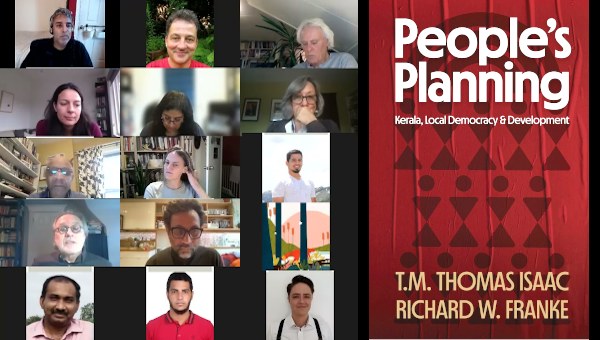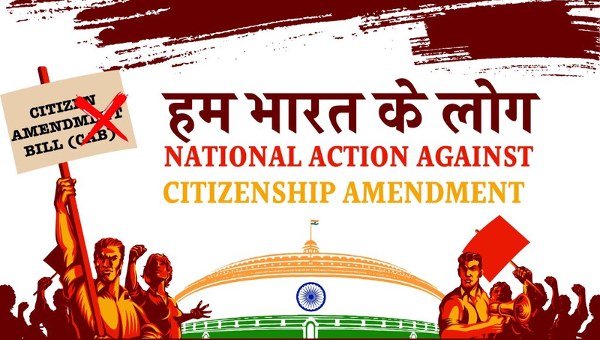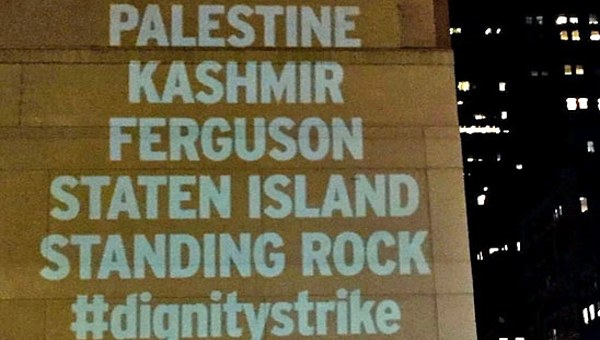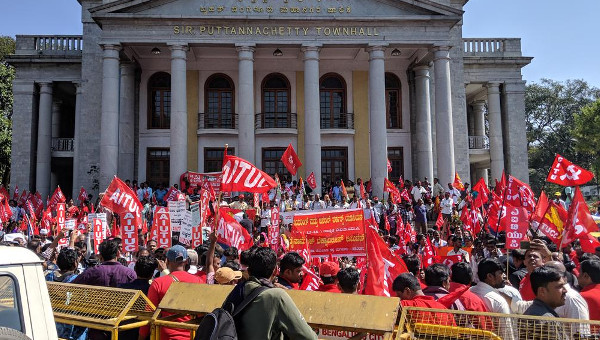The debacle faced by the CPI(M)-led Left Front (LF) in the 2014 general elections, especially in its erstwhile stronghold of West Bengal, has stunned supporters and opponents alike, and caused stirrings within the ranks of the Left activists. Out of the 98 seats it contested this time, the CPI(M) has won only 9 seats and secured a meager 3.2 per cent of the national vote – lowest since the formation of the party in 1964. With the single seat won by the CPI and two more Left backed independents from Kerala the total strength of the Left contingent in parliament is 12, which is also the lowest since the first general elections of 1951-52. The Left Front won 2 out of the 2 seats it contested in Tripura, 8 out of the 20 in Kerala and only 2 out of the 42 in West Bengal. Why has this happened? What factors and who are to be held responsible for this debacle? Can anything be done to retrieve the situation and rejuvenate the Left?
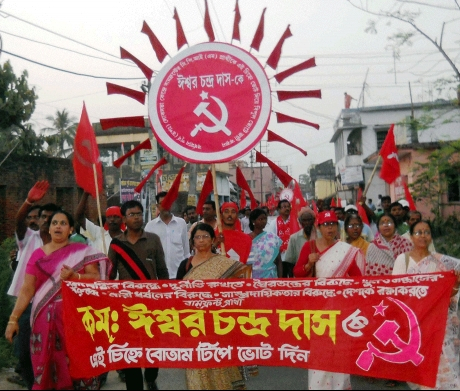
The first point to be noted while analyzing the Left’s performance is that its electoral decline had started much earlier, at least five years ago. Left’s seats in parliament came down from its peak of 60 seats in 2004 to 24 seats in 2009, with the CPI(M)’s tally falling from 44 in 2004 to 16 in 2009. While the Left’s losses in 2009 were spread across all the states from where it had won in 2004, excepting Tripura, bulk of the losses had happened in West Bengal. The 2009 elections were held in the backdrop of momentous events in Bengal like anti-land acquisition protests in Nandigram-Singur and clear signs of popular discontent against the Left regime on issues like Public Distribution System (PDS), Rizwanur Rehman‘s tragic death, Maoist insurgency in Jangalmahal, post-Sachar Committee alienation of Muslim minorities, anti-women utterances by CPI(M) leaders etc. The early signs of people’s disenchantment were already evident in the 2008 panchayat elections results, with the TMC wresting two zilla parishads from the LF. Yet, no serious introspection was carried out and the 2009 loss was explained away by the CPI(M) state leadership in terms of Left’s withdrawal of support from the Congress government at the centre on the nuclear deal issue, which had facilitated the coming together of the TMC and the Congress in Bengal.
Left’s Electoral Decline Started from 2009
This hubris on the part of the CPI(M) leadership eventually led to the fall of the three decade old LF government in 2011, with the incumbent Chief Minister and most of his cabinet colleagues suffering embarrassing defeats. It was clear by then that the mass base of the Left had started eroding across the state, with the LF voteshare falling from above 50% in 2004 to 43% in 2009 to 40% in 2011. The working people, especially the urban and rural poor and socially deprived sections like women, Adivasis, Dalits and Muslim minorities, had started drifting away toward the TMC. Moreover, even the urban middle class, which was being aggressively wooed through ‘industrialization’ and ‘Brand Buddha’ eventually got thoroughly disillusioned with the Left. Despite this, neither was anybody held accountable nor any serious course correction attempted in keeping with the democratic wishes of the people. The so-called ‘rectification campaign’ became a sham exercise in the absence of any serious rectification at the top. The energy of the leadership was rather spent on maintaining the political-organizational status quo and browbeat all voices of dissent.
It is no wonder therefore that the erosion of the support base of the Left continued in West Bengal, as witnessed in the panchayat and municipality elections in 2013. The huge loss in the panchayat elections, where the LF could register a straight win only in one out of the 17 zilla parishads, while the TMC could win in 13, was not even properly reviewed under the excuse of ‘terror and rigging.’ That is not to say that the ruling party of the state is not to be blamed – the TMC continues to indulge in state-sponsored violence, primarily directed against Left activists, which must be protested against and resisted. But the problem with the CPI(M) leadership is that other than paying lip service, it has hardly done anything worthwhile against the brutal violence faced by Left activists, right from the time agricultural labourer Salku Soren’s corpse was allowed to rot in the ‘liberated zone’ in Lalgarh. Demands for justice after student leader Sudipto Gupta’s death in police custody were also raised and then forgotten, in a routine manner. Activists have been left to fend for themselves.
West Bengal: Facts Regarding 2014 Elections
In this backdrop, the cavalier manner in which the General Secretary and West Bengal state secretary of the CPI(M) have brushed aside demands of accountability from below for the 2014 election debacle, by terming the Bengal election results as ‘distorted’ because of rigging, is shocking to say the least. The difference between the TMC and LF voteshare in 2014 is almost 10 per cent, i.e. 51 lakh votes. Even if one factors in the complaints against rigging officially made by the CPI(M) in 3200 polling booths, the margin between the TMC and the LF would have come down by say another 16 lakh (assuming 50% false votes in favour of the TMC per polling booth of approximately 1000 voters each) – still the LF will be 35 lakh votes (7 per cent) behind the TMC.
| Voteshare (in per cent) of Major Parties in West Bengal | |||
|---|---|---|---|
| Parties | 2009 | 2011 | 2014 |
| 1. TMC | 31.18 | 38.93 | 39.3 |
| 2. Left Front | 43.3 | 39.68 | 29.5 |
| 2.a of which CPI(M) | 33.1 | 30.08 | 22.7 |
| 3. BJP | 6.14 | 4.06 | 16.8 |
| 4. Congress | 13.45 | 9.09 | 9.6 |
| Source: Election Commission of India. | |||
Rather than offering such lame excuses, the CPI(M) leadership should deeply introspect on the sharp decline of the LF voteshare since 2011 (over 10 per cent) and the equally significant spike in the BJP’s voteshare from 4 per cent in 2011 to nearly 17 per cent in 2014. It is clear that a large section of the Left supporters have deserted the Left in favour of the BJP. The national wave in favour of the BJP must have enabled it to eat into the TMC’s voteshare as well. But what the TMC has lost to the BJP has got compensated by the shift of anti-BJP votes toward the TMC from the LF. Thus, the TMC-BJP polarization has led to the LF losing it both ways. TMC has held on to its voteshare while the BJP has gained considerable ground.
The rise of the BJP in Bengal is a most disturbing trend. If there is one aspect in which this state had drawn unequivocal admiration across the political spectrum over the decades, it is because of its record of communal peace and amity, be it during 1984 or 1992. Narendra Modi‘s diatribes against ‘infiltrators’ from Bangladesh during the election campaign was an ominous sign of things to come, if the BJP gains in strength. Given the Congress-like character of the TMC; which characteristically prioritizes non-secular tokenism like the ill-conceived monthly allowance for Muslim clerics (which was struck down by the Calcutta High Court last year) over substantive welfare measures for the Muslim minorities in areas like education, jobs, housing etc.; the stage is set for a vulgar communal polarization which has the potential of playing havoc with the secular fabric of the state.
Left Leadership: Litany of Errors
West Bengal: It is only a principled and vibrant Left which can effectively resist and combat the rise of the RSS-BJP in Bengal. However, the current state of the CPI(M)-led LF can hardly measure up to the task. The top CPI(M) leadership in West Bengal has lost all credibility in the eyes of the people. That is precisely why the CPI(M)-led LF has failed to build any worthwhile campaign, let alone struggles and movements, against the many misdeeds of the TMC government like the Saradha Ponzi scam or the TET exam scam or the sufferings of the people like rapes and atrocities against women, spiralling price rise, distress of the peasantry, continued neglect of the Adivasis, Dalits and Muslims and above all, the evaporation of gainful employment opportunities for the youth. The inefficacy of the LF as an opposition force in the state which has created space for the BJP to cash in on the anti-incumbency of the TMC government.
The former Chief Minister of the state – who led the LF campaign in 2014 – has continued to sulk over his missed opportunities, blaming everyone else for his failures. He is more concerned about granting SEZ status to Wipro and Infosys in the state than addressing the livelihood concerns of the workers and peasants. His articulations against the BJP also comprise more of worn out clichés of a bygone era than any substantive critique of the ‘Modified’ RSS-BJP, which propagates a heady mix of the ‘Gujarat model,’ hindutva and social engineering (OBC card, chaivaala-to-PM etc). Not so long ago, during the Singur-Nandigram debate, as the then Chief Minister, he was educating the people of Bengal on the virtues of the ‘Gujarat model,’ where the opposition is as ‘business-friendly’ as the government. Who would listen to his hypocritical criticisms regarding Modi’s crony capitalism today?
The only time one found the former Chief Minister pro-active was when it came to supporting the Congress party, in which he was ably supported by the CPI(M) state secretary and another Polit-Bureau colleague, who is a Rajya Sabha MP from Bengal. During the entire period of the UPA-II government, one never heard the former Chief Minister speak out against the monumental corruption and anti-people policies of the Congress government at the centre. Rather, one phone call from the North Block to Alimuddin Street in June 2012, forced the CPI(M) to abandon its political line of a Left and democratic alternative, which is equidistant from the Congress and the BJP, adopted in the Kozhikode party congress barely two months back, to extend support to Congress’ sitting Finance Minister in the presidential polls. The reason cited by the CPI(M) leadership was to drive a ‘wedge’ between TMC and Congress – which was quickly falsified when TMC also voted for the same candidate. On the one hand Pranab Mukherjee merrily became the President, with the Congress and TMC together voting for him. The CPI(M)’s stand, on the other hand, diluted its opposition to the Congress in one stroke, disrupted Left unity with the CPI and RSP abstaining in the polls and eventually led to the dissolution of the entire SFI organization in JNU – a four decade old unit – because they had collectively expressed dissent over the decision.
Then again on the eve of the Loksabha polls, the former Chief Minister in an interview to the PTI offered CPI(M)’s support to a Congress government “should a 2004-like situation arise.” When the LF allies publicly objected, he did what he does best – he retracted – like he has done in so many instances in the past on issues like workers’ strikes, madarsas being ISI dens, human rights being irrelevant vis-à-vis criminals and so on. But the people had got the message by then – not only that corruption, price rise and Congress’ misrule mattered little for the CPI(M)’s leadership but also that they are so out of sync with reality, that they were expecting a 2004 kind of outcome in 2014.
Such muddle-headed vacillation of the CPI(M) leadership vis-à-vis the Congress is another reason why the BJP has been able to find a foothold in Bengal, where a large section of the people have traditionally been opposed to Congress’ cronyism and dynastic politics. The former Chief Minister and his likeminded colleagues have to take full responsibility for these opportunistic intrigues, in total violation of the line decided by the party congress, which has confused Left activists and eroded popular support.
Party Centre: The central leadership of the CPI(M), under the present General Secretary, also did their bit to enhance the confusion regarding the party’s political line. Despite the bitter experience of 2009, an effort to cobble up the ‘third front’ – so notorious by now that the Left leadership have stopped using that term – was once again made. SP’s Mulayam Singh, whose party led government had played a negative role during the Muzaffarnagar riots and who had ditched the Left twice over on crucial national issues, first the nuclear deal and then FDI in retail, was accorded centre-stage in a Left sponsored anti-communalism convention held in October 2013. Nitish Kumar, who had been BJP’s ally for 17 years, was also hailed as a secular mascot. Eventually, while none of them showed much interest in a meaningful electoral alliance with the Left, the latter could not get rid of the third front baggage.
Once the AIADMK’s Jayalalitha spurned the CPI(M) and CPI over seat-sharing arrangements, the third front initiative collapsed even before the election campaign had started. The two communist parties subsequently contested 18 out of the 39 seats in Tamil Nadu – without being to ably project itself as viable alternative after years of tagging along with either of the Dravidian parties electorally – and together secured only around 1 per cent of the votes polled, which is even less than the votes polled by the NOTA option (1.4 per cent). Ideally, the Left parties should have concentrated on their areas of substantive presence much earlier, but since they have been conditioned to depend upon either of the Dravidian parties during assembly and Loksabha elections and also nominations to the Rajya Sabha, the local units had little chance of making an impact in the present elections. The central leadership’s insistence on this dependence has ensured that there is little confidence among the electorate for the Left parties to support them over the Dravidian parties.
The Kerala results are being projected as an improved performance because the CPI(M)-led LDF could increase its tally from 4 to 8. The fact remains that this is the only major state in the country where the Congress and its allies have won majority of the seats – 12 out of 20 – they have lost everywhere else. Among the many reasons for the mediocre showing by the LDF, two stand out prominently. The conviction of three CPI(M) members in the murder of RMP leader TP Chandrasekharan by a session’s court in January 2014 exposed the lie that the CPI(M) state leadership parroted since May 2012, that the party had nothing to do with the murder. This adversely affected LDF’s credibility as well as its poll prospects, especially in the Vadakara seat where TP Chandrasekharan had contested last time.
The refusal of the CPI(M) state leadership to accommodate even a single RSP candidate drove the latter into the UDF. The UDF-backed RSP candidate defeated the CPI(M) candidate – a Polit-Bureau member – from the Kollam seat by a comfortable margin. In both these cases, the central leadership of the CPI(M) failed to intervene and simply tailed the state leadership. The abrupt and non-transparent withdrawal of the agitation against the UDF government on the solar panel scam and the admission of two former BJP leaders and NaMo Vichar Manch activists in Kannur to the CPI(M) on the eve of the elections were controversial moves by the state leadership, which also created misgivings. The central leadership did not intervene in either of the cases.
Tripura remains as the sole exception to the CPI(M)’s otherwise poor showing in the polls, where the party won the two seats with huge margins over a weak and fragmented opposition, securing over 64 per cent of the votes. However, the credit for that victory primarily goes to the Tripura Chief Minister and his colleagues in the state who have substantively delivered on pro-people governance and have also been able to largely insulate the party from the negative trends visible within the CPI(M) elsewhere. The central leadership of the CPI(M) can ill afford to seek solace for its failings elsewhere in the Tripura results.
Left Revival: What can be Done?
The problems afflicting the Left, especially the CPI(M), today are manifold. The rank and file needs to come out of the denial mode and realize that perhaps for the first time in history, the CPI(M) and indeed the entire Indian Left, is faced with an existential crisis. There are no easy short-cuts out of this crisis. If the Left has to have a future from now, it is only through an arduous path of struggles and sacrifices.
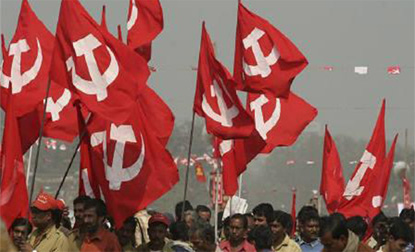
The top CPI(M) leadership, especially in West Bengal, has failed beyond redemption. No positive change within the party as well as re-connecting with the working people – especially the youth who have become a vital constituency – can be achieved unless a new team with fresh ideas takes over. Distinguished Marxist scholar and the Finance Minister of the first LF government in West Bengal, Ashok Mitra, has been advocating this course for the Bengal CPI(M) since 2011. If the present leadership continues with its stubborn refusal to own up responsibility for the electoral debacle, the activists have to assert their views and drive changes from below, utilizing all the available democratic means.
Serious debates and discussions need to be initiated within the Left regarding the ideological-political course it needs to adopt today. On the one hand, getting co-opted by the neoliberal establishment would be suicidal; the Left will lose its raison d’être if it gives up on the struggle against class exploitation and social oppression and opts for collaboration with big capitalists and their establishment. On the other hand, dogmatic adherence to the shibboleths inherited from the failed socialist models of the twentieth century will only lead to further decay and ossification.
Special emphasis should be given to re-building the Left movement in Indian conditions, marked by an utterly imperfect, hugely unequal and yet functional, multi-party democracy; rather than trying to imitate models from abroad. The issues raised by veteran peasant leader Abdur Rezzak Mollah, regarding social justice and the need to ensure adequate representation of socially deprived sections within the leadership of the Left needs to be seriously addressed. Unless there are more women, Dalits, Adivasis and Muslims within the Left leadership, the neglect of social issues will continue. Most importantly, there is no way forward for the Left in India unless there is a vigorous effort to establish broad-based unity of all Left and democratic forces on a principled basis.
Is the CPI(M) still capable of bringing about this radical self-restructuring and infuse fresh energy within the Left movement as a whole? We are at an inflection point now. If things continue to remain the same and a movement for renewal gets stymied within the CPI(M), the birth of a new political force within the Left will become inevitable. With the Modi-regime taking its shape at the centre, time is running out. •
This article first appeared on Pragoti.


